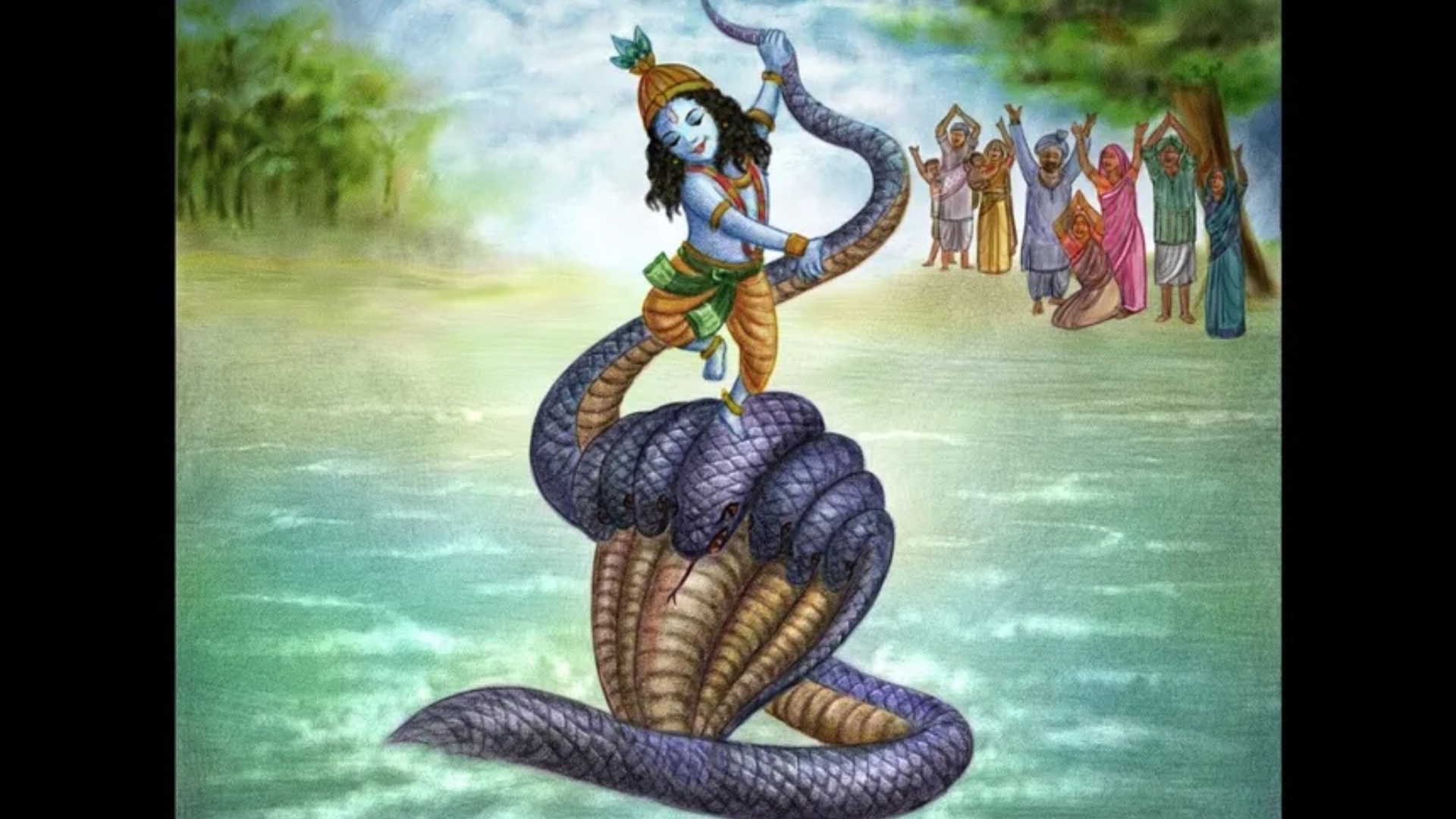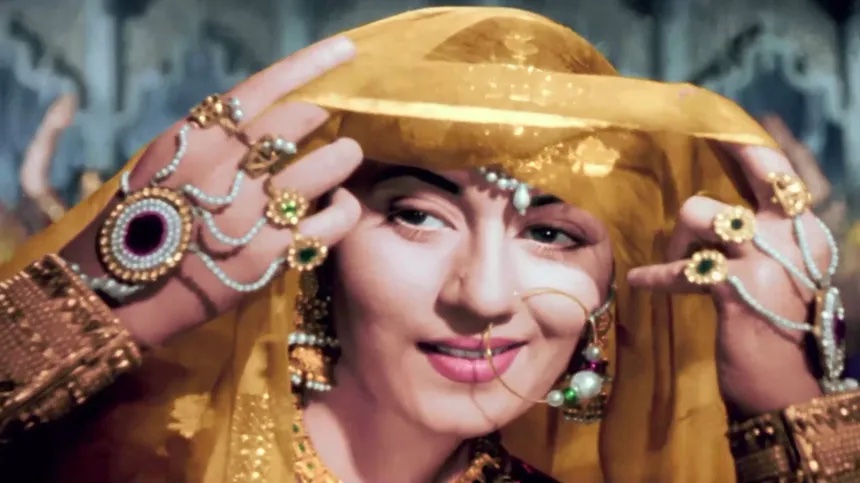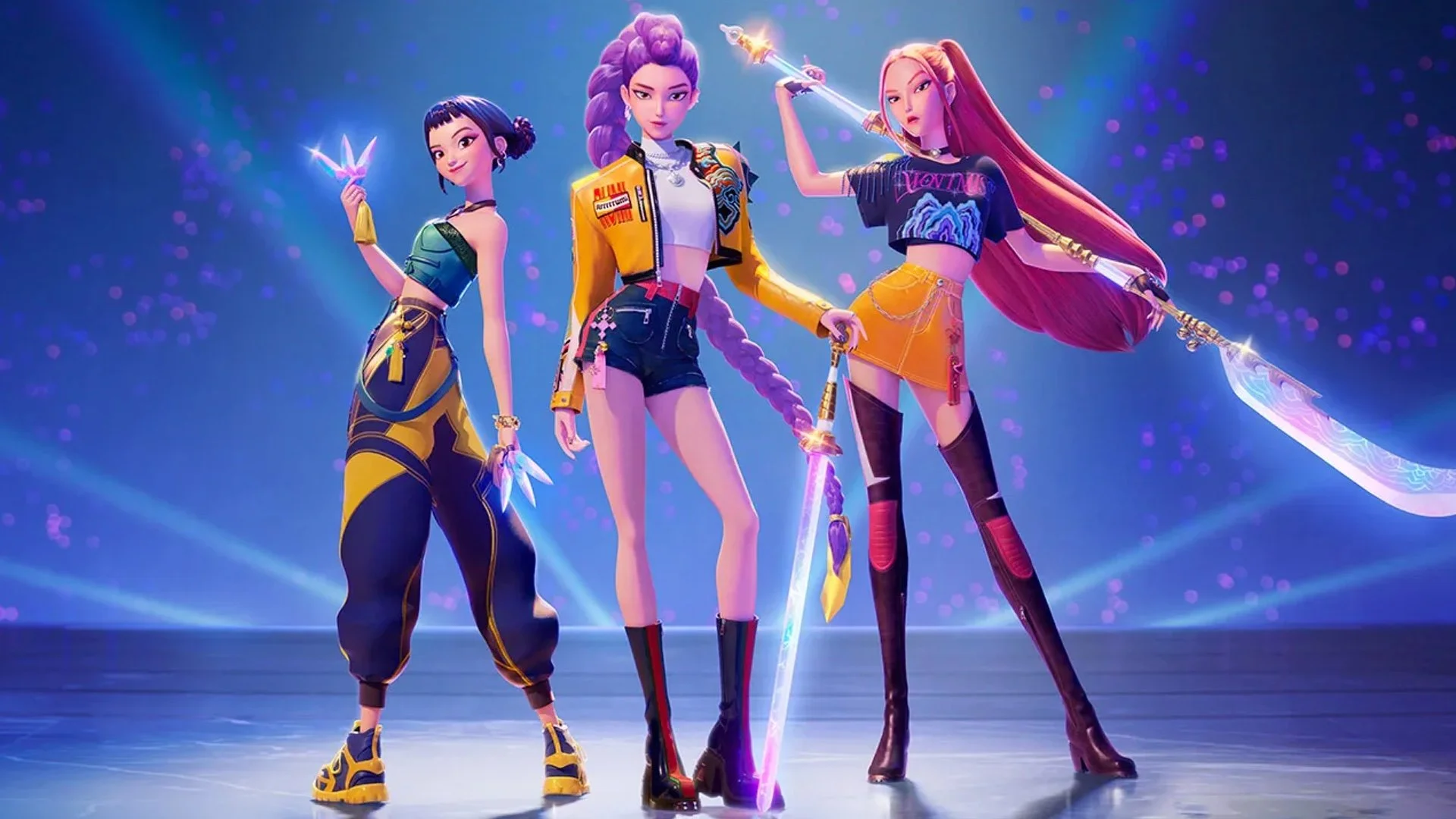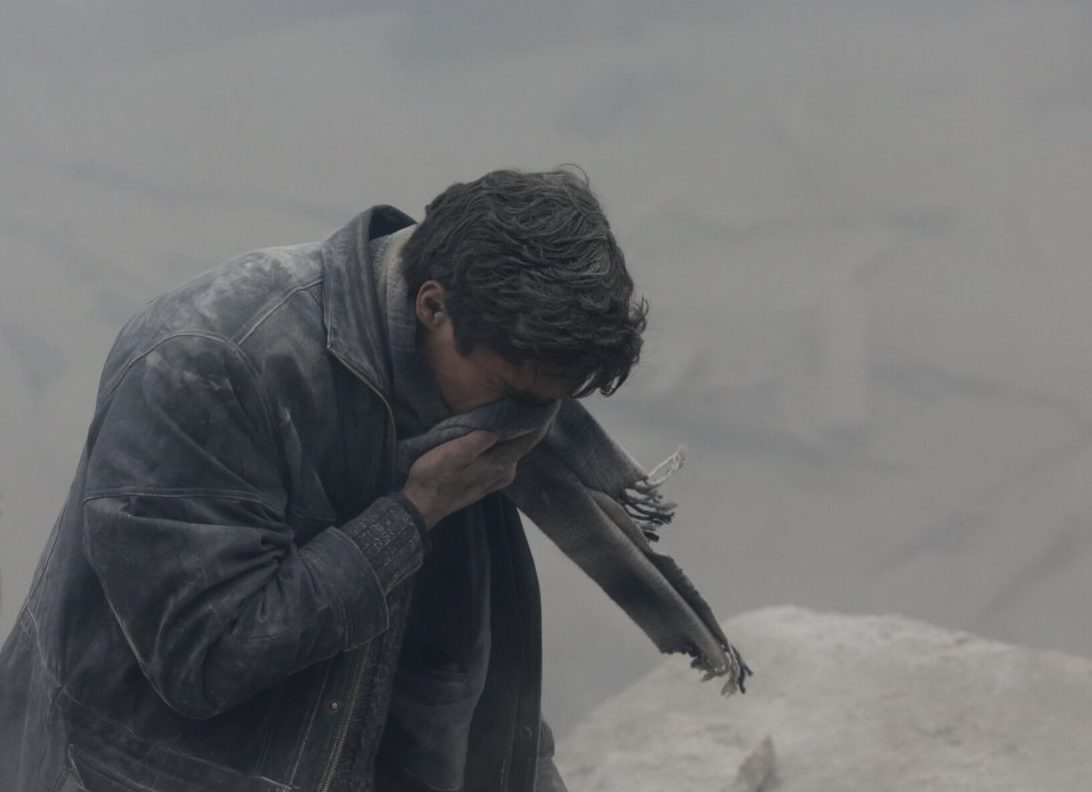The very successful installation starts from the origins of Indian cinema, intrinsically linked to the Hindu religion. Before the invention of motion pictures in 1896, traveling shows re-enacted stories of the Indian gods, which sometimes took several days to tell! We discover shadow theatre, magic lantern projections (including a test-on-site reconstruction produced by Gitanjali Rao) and even scroll paintings. All these narrative arts, linked to the fair environment, largely inspired the first Indian films.
Mythological and historical genres quickly established themselves in the emerging industry. Hinduism, a polytheistic religion and one of the oldest in the world, proves to be an inexhaustible source of inspiration in a society very attached to its own traditions and beliefs. Among the most told stories of deities, the exhibition tells us that of the god Vishnu, whose avatars Krishna and Rama have the task of fighting demons to put the world back in order. Mythology lovers will be happy. In 1913, Dadasaheb Phalke directed the first Indian film, “Raja Harishchandra,” which traces the reign of King Harishchandra and his relationship with the gods. The years from 1920 to 1940 were those of the primacy of Bollywood studies, while talking cinema arrived in 1931 with the film “’Alam Ara” by Ardeshir Irani.

An instrument of emancipation in the face of colonization
In a country colonized by England for almost two centuries, divided by regions, languages and religions, Indian cinema becomes a powerful tool for uniting peoples. After its independence in 1947, the emerging nation needed to remember its common history, to reclaim its identity. Historical films are very popular, especially those that chronicle the heyday of the prosperous Mughal empire.

The 1950s and 1960s were a golden age of Hindi cinema, led by directors such as Mehboob Khan, Raj Kapoor and Guru Dutt. Awarded in 1956 at the Cannes Film Festival for “The Wail of the Road”, Satyajit Ray gives his credentials to Indian art cinema. Industrialized production in the 1970s, by region. We then talk about Bollywood (a contraction of “Bombay” and “Hollywood”, interpreted in Hindi), but also about Tollywood (Telugu language) or Kollywood (Tamil language). Very popular “masala” (“spice mixture”) films mix genres (drama, action, comedy, romance, etc.) and contain scenes in which the cast sings and dances in the middle of the story.
Every decade contains its share of Bollywood films destined to become classics. In 2001, the historical film Lagaan by Ashutosh Gowariker, tells the story of the struggle of the villagers of central India against the English settler. To avoid paying a grain tax that leaves them starving, they participate in a cricket match and beat the English at their own sport. It is one of the biggest hits in the history of Bollywood.
This content is blocked because you have not accepted cookies and other trackers. This content is provided by YouTube.
To view it, you must accept the use made by YouTube with your data which may be used for the following purposes: to allow you to view and share content with social media, to promote the development and improvement of the products of Humanoid and its partners , show you personalized advertisements related to your profile and activity, define a personalized advertising profile, measure the performance of advertisements and content on this site and measure the audience of this site (more information)
Manage my choices
We also learn more about Bollywood dances, how the choreography, foot positions and hand movements tell a specific story and reveal the characters’ feelings. These dances have evolved over the decades and are now very popular on social networks. Didactic but not saturated with information, the exhibition offers a tour of over 200 different works: paintings, shadow figures, sets, costumes, sumptuous nose jewels, artificial daggers studded with precious stones, photographs and of course film excerpts, the moment the highlight of which is a widescreen projection of iconic moments from each decade, from the 1970s to 2010.
The place of women in Bollywood
The last part focuses on the big names of modern Bollywood and evokes the devotion of fans. Unlike European customs, the cinema experience in India is lived with family, friends, singing, dancing and screaming in front of the film! Shashi Kapoor, Amitabh Bachchan, Silk Smitha, Rishi Kapoor, Sridevi, Rajinikanth, Kamal Haasan, Rekha and Madhuri Dixit are all Indian superstars worshiped as demigods and goddesses.
![Copy of [Image de une] Horizontal – 07-11-2023T175308.367 Copy of [Image de une] Horizontal – 07-11-2023T175308.367](https://c0.lestechnophiles.com/www.madmoizelle.com/wp-content/uploads/2023/11/copie-de-image-de-une-horizontale-2023-11-07t175308367.jpg?resize=1920,1080&key=b2fc8035)
On the other hand, the exhibition does not engage in any reflection on gender and race. Only a few biographies of actresses provide information on the place of women in Bollywood. Actresses, often former misses like Aishwarya Rai or Zeenat Aman (who upset the codes of traditional femininity in the 70s) are still fighting against the persistence of dated female stereotypes. Mentalities evolve slowly in this conservative society. But Me Too has also arrived in India, as actress Kalki Koechlin testified. And female directors have taken over Bollywood. To learn more you will have to look for other resources, such as the documentary “Women, beyond Bollywood” (2022), directed by Rahila Bootwala.
Even on the merits we would have liked a real reflection on the part of Indian film critics. These films appear very gendered and at the same time put powerful female characters center stage. They probably contain an element of empowerment. No word even on racism in India and the fact that most Indian superstars are light skinned. This colorism also exists in Hollywood, but in this caste country with a colonial past it persists in a different form, which deserves to be explored. The exhibition therefore has its limitations but remains an excellent introduction to Bollywood cinema.
Do you like our articles? You’ll love our podcasts. All our series, urgently listen to here.
Source: Madmoizelle
Mary Crossley is an author at “The Fashion Vibes”. She is a seasoned journalist who is dedicated to delivering the latest news to her readers. With a keen sense of what’s important, Mary covers a wide range of topics, from politics to lifestyle and everything in between.




